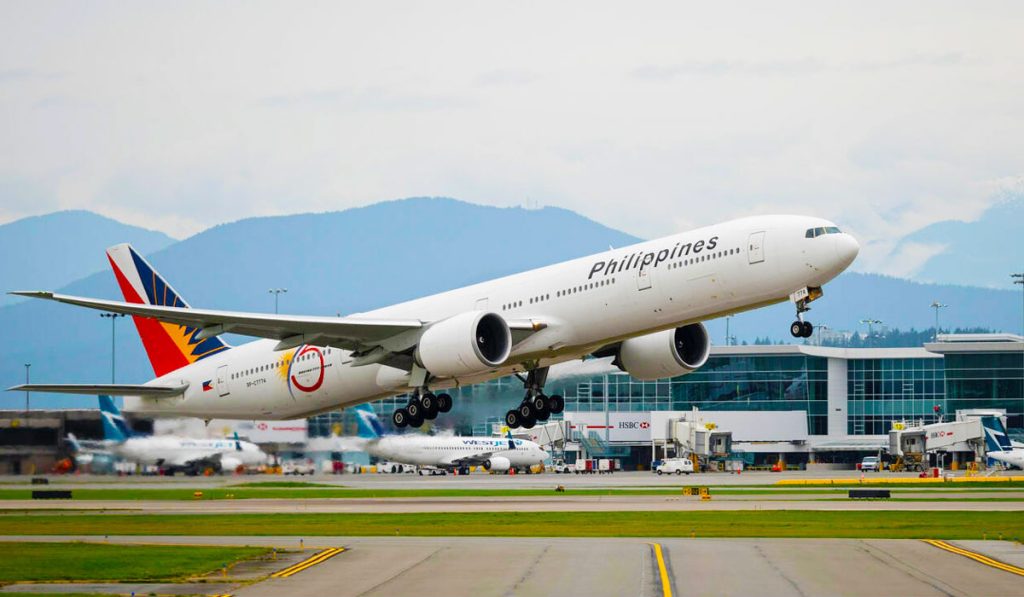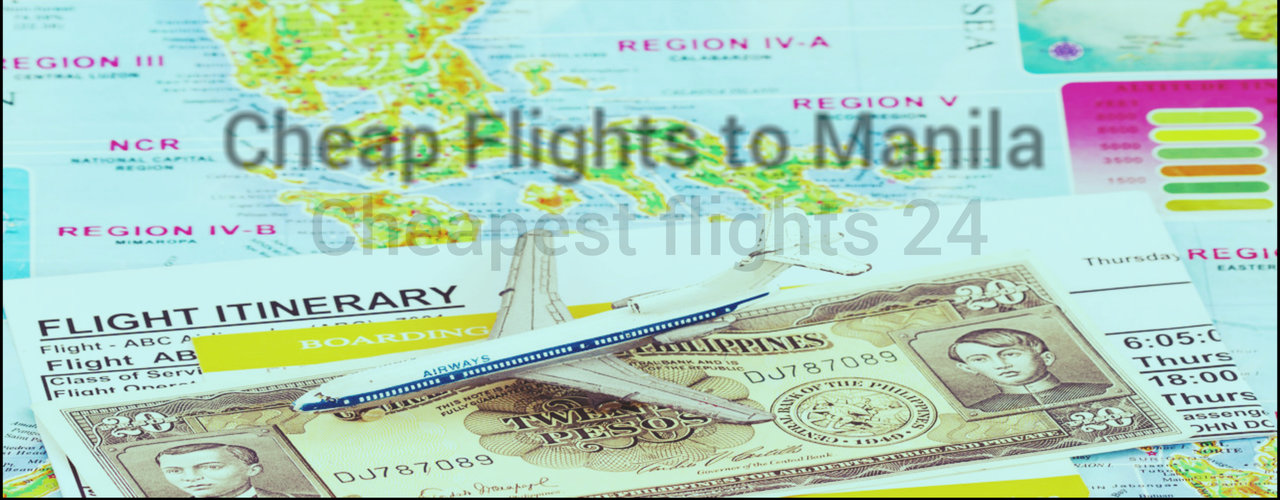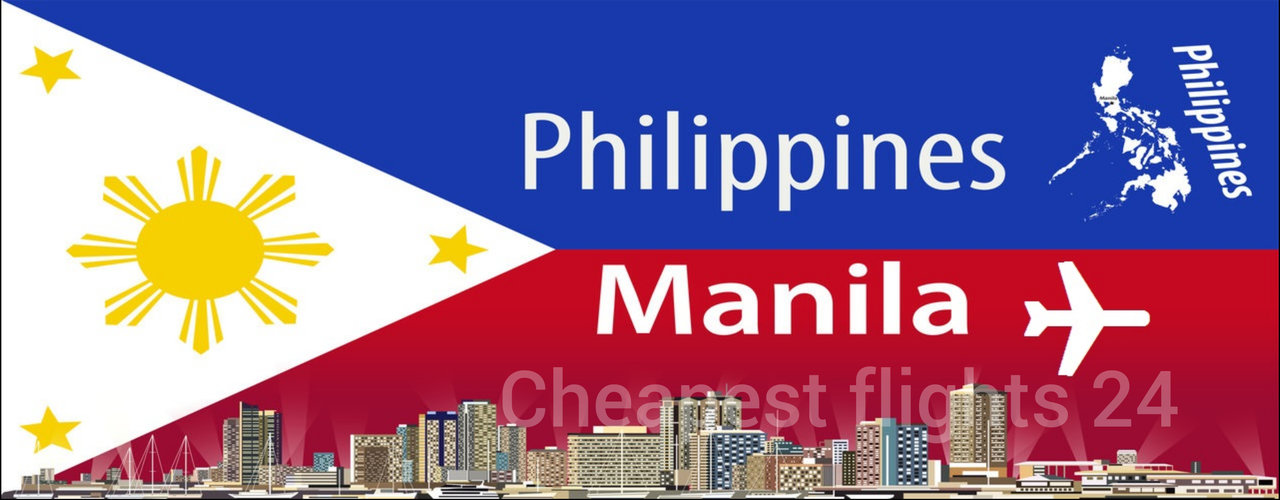
The Philippines, an archipelagic marvel boasting over 7,000 islands, beckons with a symphony of turquoise waters, verdant landscapes, vibrant cultures, and the warmest smiles you’ll ever encounter. From the powdery white sands of Boracay to the ancient rice terraces of Ifugao, this Southeast Asian gem offers a kaleidoscope of experiences. The good news? Experiencing this paradise doesn’t have to break the bank, especially when it comes to airfare. This comprehensive guide will navigate you through securing cheap flights to the Philippines and equip you with everything you need for an unforgettable, budget-friendly journey.
The Allure of the Pearl of the Orient Seas
Before diving into the logistics, let’s paint a picture of why the Philippines should be at the top of your travel list. It’s a land of contrasts: bustling metropolises like Manila and Cebu give way to serene, untouched islands. Adventure seekers can dive among World War II shipwrecks in Coron, surf world-class waves in Siargao, or trek to active volcanoes. Culture enthusiasts can explore colonial towns, witness ancient rituals, and savor a unique culinary fusion. And for those simply seeking relaxation, countless beaches offer the perfect backdrop for sunbathing, swimming, and soaking in breathtaking sunsets. Beyond its natural beauty, the Filipino people – renowned for their hospitality, resilience, and joy – are often cited as the country’s greatest asset, making every interaction a memorable one.

Related Articles about Your Gateway to Paradise: Unlocking Cheap Flights and Unforgettable Adventures in the Philippines:
- Bula! Your Ultimate Guide to Traveling in Fiji, the Land of a Thousand Smiles
- An Alpine Dream: Your Comprehensive Guide to Traveling to Austria
- Turkey: A Tapestry of Wonders – Unveiling Its Top Attractions, Rich History, and Essential Travel Guide
- Busan: Where Mountains Meet the Sea – A Comprehensive Guide to South Korea’s Coastal Gem
- Abu Dhabi: A Glimpse into Timeless Grandeur and Modern Marvels
Cracking the Code: Finding Cheap Flights to the Philippines
The journey to the Philippines often begins with a long-haul flight, which can be the most significant expense. However, with strategic planning and flexibility, you can drastically reduce the cost.
-
Be Flexible with Your Dates: This is arguably the most crucial tip. Flight prices fluctuate dramatically based on demand.
- Shoulder Seasons (May, early June, November): These periods often offer a sweet spot – pleasant weather with fewer crowds and lower prices than peak season.
- Off-Peak Season (June to October): While this is the rainy season (and typhoon season), you’ll find the absolute lowest fares. If you’re willing to brave occasional downpours (which often don’t last all day) and keep an eye on weather forecasts, you can snag incredible deals. Avoid major holidays like Christmas, New Year, and Easter, as prices skyrocket.
- Mid-week Travel: Flying on Tuesdays, Wednesdays, and Thursdays is generally cheaper than weekend travel.

-
Book in Advance, But Not Too Far: The sweet spot for international flights is typically 2-4 months before your departure date. Booking too far out can sometimes be more expensive, and last-minute deals are rare for long-haul routes.
-
Utilize Flight Comparison Websites and Price Alerts:
- Aggregators: Websites like Google Flights, Skyscanner, Kayak, and Momondo allow you to compare prices across multiple airlines and online travel agencies (OTAs).
- Price Alerts: Set up email alerts for your desired routes. These sites will notify you when prices drop, allowing you to pounce on a good deal.
-
Consider Different Airports:
- Major Gateways: Manila (Ninoy Aquino International Airport – MNL) and Cebu (Mactan-Cebu International Airport – CEB) are the primary international hubs. MNL usually has more flight options and competitive prices due to higher volume.
- Alternative Routes: Sometimes, flying into a major hub in a neighboring country (like Singapore, Kuala Lumpur, or Bangkok) and then taking a separate budget flight to the Philippines can be cheaper. Just ensure you account for layover times and potential visa requirements for the transit country.
-
Be Open to Layovers: Direct flights are convenient but often pricier. Opting for flights with one or two layovers, especially in major Asian hubs, can significantly cut costs. Use the layover as an opportunity to stretch your legs or even briefly explore another city if it’s long enough.
-
Fly Budget Airlines (for domestic and some regional flights): Once you’re in the Philippines, local carriers like Cebu Pacific and AirAsia Philippines offer incredibly affordable domestic flights, essential for island hopping. Keep an eye on their promo fares, which are frequently announced.
-
Browse in Incognito/Private Mode: Airlines and travel sites sometimes use cookies to track your searches and potentially increase prices based on your perceived interest. Using incognito mode can prevent this.
Top Attractions: A Glimpse into Philippine Wonders
The Philippines boasts an incredible diversity of attractions. Here are some must-visit destinations:
- Palawan: Often lauded as the "World’s Best Island," Palawan is a paradise of limestone karsts, crystal-clear lagoons, and pristine beaches.
- El Nido: Famous for its stunning Bacuit Bay, island-hopping tours to hidden beaches, secret lagoons, and snorkeling spots.
- Coron: Offers breathtaking lakes, lagoons, and unique diving experiences among sunken Japanese shipwrecks from WWII.
- Puerto Princesa: Home to the UNESCO-listed Underground River, one of the longest navigable underground rivers in the world.
- Boracay: Renowned for its powdery white sands of White Beach, vibrant nightlife, and stunning sunsets. While it underwent a rehabilitation period, it has returned as a more sustainable and beautiful destination.
- Siargao: The "Surfing Capital of the Philippines," drawing surfers from around the globe to its famous Cloud 9 break. Beyond surfing, it offers beautiful lagoons, rock pools, and a laid-back island vibe.
- Banaue Rice Terraces (Ifugao): A UNESCO World Heritage site, these "Stairways to Heaven" are 2,000-year-old terraces carved into the mountainsides by the indigenous Ifugao people, showcasing ancient engineering marvels.
- Chocolate Hills (Bohol): Over 1,260 perfectly cone-shaped hills that turn a rich brown during the dry season, resembling giant chocolate kisses.
- Mayon Volcano (Albay): The Philippines’ most active volcano, famous for its perfect cone shape. It’s a majestic sight, best viewed from a distance, perhaps during an ATV adventure around its base.
- Intramuros (Manila): The historic walled city of Manila, a living museum of Spanish colonial architecture, cobblestone streets, and ancient churches like San Agustin Church. Explore it by foot, bicycle, or a traditional horse-drawn carriage (kalesa).
- Vigan (Ilocos Sur): Another UNESCO World Heritage site, Vigan offers a beautifully preserved Spanish colonial town, complete with ancestral houses, cobblestone streets, and the iconic Calle Crisologo.
A Journey Through History: The Philippines’ Rich Past
The Philippines’ history is a tapestry woven from indigenous roots, colonial influences, and a resilient spirit.
- Pre-Colonial Era: Before the arrival of Western powers, the islands were home to various thriving kingdoms, sultanates, and indigenous tribes with sophisticated social structures, trade networks (with China, India, and Arab traders), and unique belief systems. Evidence of this includes ancient gold artifacts and the distinct scripts of early Filipinos.
- Spanish Colonization (1521-1898): Ferdinand Magellan’s arrival in 1521 marked the beginning of Spanish rule, lasting over 300 years. This period profoundly shaped Filipino culture, introducing Catholicism, the Latin alphabet, Western legal systems, and countless Spanish loanwords. Manila became a vital trade hub via the Manila-Acapulco Galleon Trade. The long Spanish rule also sowed the seeds of nationalism, culminating in numerous revolts and the eventual Philippine Revolution.
- American Period (1898-1946): After the Spanish-American War, the Philippines was ceded to the United States. This era brought about significant changes, including the establishment of public education, democratic institutions, and the widespread use of English. American cultural influences, from popular music to democratic ideals, became deeply embedded.
- World War II and Independence: The Philippines endured a brutal Japanese occupation during WWII, leading to immense suffering and destruction. Following the war, the country gained full independence from the United States on July 4, 1946.
- Post-Independence: The post-war period saw challenges in nation-building, political instability, and economic development. Despite these hurdles, the Philippines has maintained a vibrant democracy, continuously striving for progress while celebrating its unique blend of Eastern and Western heritage. This rich history is evident in the architecture, language, food, and traditions found across the archipelago today.
Essential Travel Tips for the Philippines
To ensure a smooth and enjoyable trip, keep these practical tips in mind:
- Visa Requirements: Most nationalities are granted visa-free entry for 30 days. Always check the latest visa policies for your country before traveling.
- Currency: The official currency is the Philippine Peso (PHP). ATMs are widely available in cities and larger towns, but less so in remote areas. It’s wise to carry some cash, especially smaller denominations, for local markets and tricycle rides.
- Language: Filipino (Tagalog) is the national language, but English is an official language and widely spoken, especially in tourist areas and cities. Learning a few basic Tagalog phrases (e.g., "Salamat" for thank you, "Magandang umaga" for good morning) will be appreciated.
- Safety: The Philippines is generally safe for tourists, but like any destination, exercise caution. Be aware of your surroundings, especially in crowded areas, and avoid walking alone at night in unfamiliar places. Keep an eye on your belongings. Consult local advice regarding specific areas.
- Connectivity: Local SIM cards (Globe or Smart) are affordable and readily available at airports and convenience stores. They offer good coverage in most populated areas. Wi-Fi is common in hotels and cafes but can be slow outside major cities.
- Health & Vaccinations: Consult your doctor about recommended vaccinations (e.g., Hepatitis A & B, Typhoid). Drink only bottled water. Carry a basic first-aid kit, insect repellent, and sunscreen. Travel insurance is highly recommended.
- Respect Local Culture: Filipinos are generally conservative and respectful. Dress modestly when visiting churches or religious sites. Always ask for permission before taking photos of people.
- Bargaining: Bargaining is common in markets and for tricycle fares, but always do so respectfully and with a smile.
- Island Time: Embrace the relaxed pace of life, especially on the islands. Things might move slower than you’re used to, but that’s part of the charm!
Accommodation Options: From Budget to Boutique
The Philippines offers a vast range of accommodation to suit every budget and travel style.
- Budget (PHP 300-1,000 / USD 6-20):
- Hostels: Found in major tourist hubs, offering dorm beds and private rooms. Great for solo travelers and meeting others.
- Guesthouses/Homestays: Often run by local families, providing a more authentic experience and excellent value. Basic amenities, but usually clean and friendly.
- Fan Rooms: Many budget accommodations offer fan-only rooms, which are significantly cheaper than air-conditioned options.
- Mid-Range (PHP 1,000-4,000 / USD 20-80):
- Boutique Hotels: Increasingly popular, offering unique designs and personalized service.
- Resorts: On many islands, you’ll find comfortable resorts with pools, restaurants, and various amenities.
- Airbnbs: A growing option, offering apartments or rooms in local homes, often with kitchen facilities.
- Luxury (PHP 4,000+ / USD 80+):
- High-End Resorts: World-class resorts with stunning locations, private beaches, spas, and gourmet dining. Think El Nido Resorts, The Lind Boracay, or Shangri-La properties.
- Five-Star Hotels: Found in major cities like Manila and Cebu, offering all the comforts and services expected of luxury brands.
Booking in advance, especially during peak season, is always a good idea, particularly for popular destinations like Boracay and El Nido.
Getting Around: Navigating the Archipelago
Inter-island travel is an integral part of a Philippine adventure.
- Domestic Flights: Essential for covering long distances between islands. Cebu Pacific and AirAsia Philippines offer frequent and affordable flights connecting major hubs like Manila, Cebu, Caticlan (Boracay), Puerto Princesa (Palawan), and Siargao. Book these in advance for the best prices.
- Buses and Vans: For land travel within larger islands (Luzon, Palawan, Mindanao), an extensive network of buses and shared vans (UV Express) connects cities and towns. These are very affordable but can be crowded and slow.
- Jeepneys: The iconic, brightly decorated public utility vehicles are the backbone of urban and provincial transport. They follow fixed routes and are incredibly cheap, offering a truly local experience.
- Tricycles: Motorbikes with sidecars, tricycles are ubiquitous for short distances in towns and smaller cities. Always agree on the fare before hopping on.
- Taxis and Ride-Sharing (Grab): Taxis are available in major cities. Grab (Southeast Asia’s version of Uber) is widely used in Manila, Cebu, and other large urban centers, offering a convenient and metered option.
- Ferries and Boats: Crucial for island hopping and connecting islands not serviced by flights. From fast crafts to slower RORO (Roll-On/Roll-Off) ferries, options vary. Always check schedules and safety records. For island-hopping tours in places like El Nido or Coron, you’ll typically join a group tour on a traditional outrigger boat (bangka).
Best Time to Visit the Philippines
Choosing the right time to visit can significantly impact your experience.
- Dry Season (December to May):
- Pros: This is the most popular time to visit, characterized by sunny skies, minimal rainfall, and calm seas, perfect for beach activities, island hopping, and outdoor adventures. Temperatures average 25-32°C (77-90°F).
- Cons: Higher prices for flights and accommodation, larger crowds, especially during Christmas, New Year, and Easter. April and May can be intensely hot and humid.
- Wet Season (June to November):
- Pros: Lower prices for flights and hotels, fewer tourists, and lush green landscapes. Rain showers are often short and intermittent, not necessarily all-day downpours. Surfing conditions in Siargao are excellent during this time.
- Cons: Higher chance of rain, humidity, and the possibility of typhoons (especially from July to October), which can disrupt travel plans, including flight cancellations and ferry suspensions. Some remote islands might be less accessible.
- Shoulder Seasons (May, November): These months can offer a good balance of decent weather and fewer crowds/better prices than the peak dry season. May can be hot, while November marks the transition from wet to dry, often with pleasant weather.
For most travelers, January to April offers the ideal weather conditions, though you’ll need to book flights and accommodation well in advance to secure good deals. If budget is a primary concern, consider the shoulder months or even the early wet season, keeping a close eye on weather forecasts.
Your Philippine Adventure Awaits
The Philippines is more than just a destination; it’s an experience that captures the heart and ignites the spirit of adventure. With stunning natural beauty, a rich history, warm hospitality, and the possibility of securing cheap flights, this tropical paradise is within reach. By leveraging smart booking strategies and embracing the local way of life, you can embark on an unforgettable journey without draining your wallet. So start planning, set those flight alerts, and prepare to discover the magic of the Philippines – where every sunset is a masterpiece and every smile is a welcome home.





